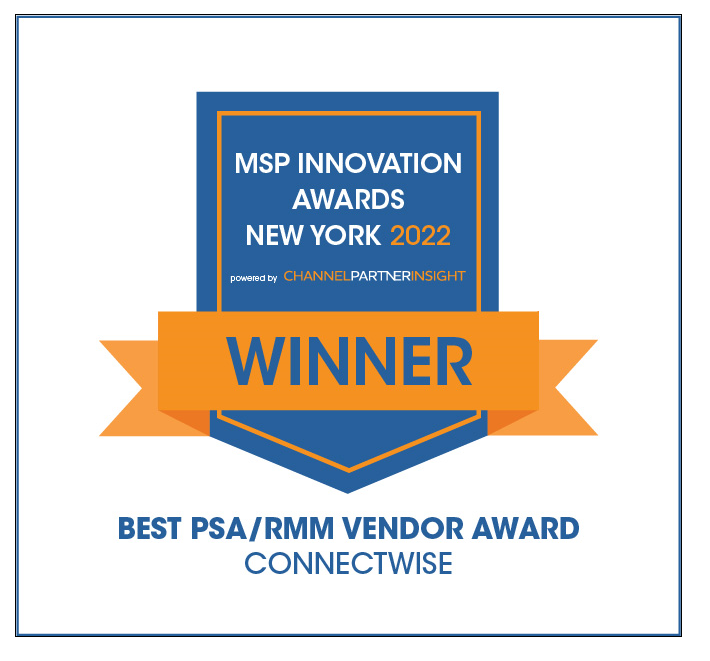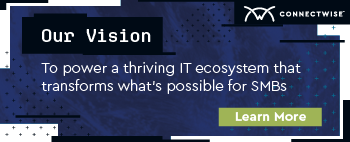Marketing on a budget: 10 tips to build brand awareness when money is tight
This blog post was originally published on December 14, 2015
For many growing companies, marketing budgets are tight. That’s why leveraging the existing platforms and channels you have at your disposal is key to making the most of your efforts. The secret to building brand awareness isn’t money—it’s strategy. To help you develop yours, here are some of the best, low-cost ways you can boost brand recognition.
How to increase brand awareness on a budget
1. Optimize your website for search engines
IT solution providers (TSPs) can add new customers regardless of geographic location. Your website acts as your global, digital storefront. It’s often your first opportunity to capture the attention of potential prospects and convince them you’re the best company for the job. First, you need them to find you when they search the internet for help.
A strong search engine optimization (SEO) strategy makes that possible by putting your site higher in search results when prospective clients are looking for potential providers. Your SEO strategy should incorporate high search volume and lower competition keywords throughout the copy on your website, site speed, and user experience (UX). The goal is to create an attractive, informative, and easy-to-navigate website that convinces prospects to keep reading—and convert to sales leads.
Bonus Tip: Not sure where to start? Check out this SEO Starter Guide.
2. Maximize client referrals
Your most powerful lead generation tool is word of mouth. Nothing beats the leads you’ll receive via referrals from existing clients, as they’ve already heard about how great your company is from somebody they trust—making them more likely to convert.
To maximize referrals, create a simple referral program that empowers and rewards your clients for referring your business to their peers. For example, you might offer them a discount for every referral that converts, or a month of free service. Be sure to highlight the program on your website and in your conversations with clients—after all, it’s only useful if people know about it.
3. Attend networking events
Attending local networking events is a great way to meet potential clients and let them know about your business’s offerings. Even if you don’t meet anyone who immediately signs on, your name—and face—will be top-of-mind when they’re next looking for services.
Networking can help you understand the intricacies of the markets you sell to and create connections that inform your customer service strategy and relationships. Understanding your target customer’s challenges can help you meet their needs.
Participating in community events puts a face on your organization. It increases the chances that companies will turn to you and your firm when they have questions about IT.
Demonstrate your value and build trust with local businesses by attending a variety of different events, including:
- Trade shows
- Chamber of Commerce
- Networking groups (such as BNI)
Focusing on a few key verticals or industries where you see the greatest potential is a good way to help determine the events that will be most beneficial for your team to attend.
You can also host your own “Lunch and Learns”—voluntary meetings, presentations, and training sessions that take place over lunch. Bringing people from across the organization together and opening up the event to guests can be a great way to drive personal development , build brand awareness, and generate warm leads.
4. Explore local sponsorships
Consider finding local events to sponsor to spread the word about your business.
From a 5K run to a school fundraiser to a community blood drive, look for any opportunity to make a difference while building awareness about your firm. Giving back is its own reward, but it can also be highly beneficial to your business in the long run as it can cement your standing as a pillar of your local community.
5. Refine your email strategy
You don’t need to pay for a fancy service to write emails. Creating a mailing list and sending out regular emails can serve as a friendly reminder that your business is there to help, while letting prospects know about any updates or new offerings that you want to share.
Clarity and brevity are essential. Nobody wants to read an email that goes on and on or one with no clear messaging. Instead, tailor your emails to address the specific needs of your target audience and include a clear call to action in the text. You’ll help the reader feel as though they’re reading something with a clear purpose from someone that understands their unique challenges. Being relevant can boost your open and click-through rates.
Bonus Tip: Standardize your email signatures
An email signature is a great way to reinforce a message, communicate a new offer, and provide contact information or hours of operation. But while many employees like to add images, quotes, or colorful fonts to their signatures, this can actually hurt your brand identity. That's why it’s worth standardizing your signatures across the organization. If you create various signatures to promote multiple services and campaigns, ensure that the font, logo, and color scheme are consistent to tie it all together.
6. Leverage social media
Social media is a great way to further your relationships with your customers and give prospective clients additional avenues to learn about your company. Research from IDG Connect estimates that 86% of IT buyers use social media to make technology decisions—and this number is likely to continue to grow. You can build brand awareness at little to no cost by improving your social media presence.
About 90% of marketers say that social media generates immense exposure for their company, so capitalizing on this opportunity is essential to growth. Here are some tips to help you optimize your content for each platform:
Facebook is a great place to offer tips, promote special offers, and ask for feedback. It’s also the perfect platform for highlighting any philanthropic activities your company is involved in. When all else is equal, customers are more likely to select the company that supports a good cause—so if you’re doing something good, post it.
LinkedIn has quickly grown from a job-searching site to a significant professional social media and networking hub. Leverage your LinkedIn presence by targeting potential customers, adding new connections, increasing your email marketing list through LinkedIn messaging, and using sponsored updates.
Don’t forget the simplest form of marketing on LinkedIn: writing regular posts. The more you post and the higher quality your posts are, the more recognition you’ll achieve.
You can also join groups and even create your own. Groups can help you become a core part of your audience’s community and get a greater sense of what they want. Be sure to optimize your company page as well—that way, when people land on your page through your marketing activity, they’ll be more inclined to read through and reach out.
Twitter is a buzzing platform that’s particularly effective for timely announcements. Post about company products, promotions, events, and more. By sharing regular content—no matter how brief in character count—you can keep your business, capabilities, and achievements in front of your existing clients and potential prospects.
If you don’t have a Twitter account with a significant number of followers, ask colleagues who are active on Twitter to post about your business. The more tweets with your company’s name on them, the greater the visibility you’ll achieve.
Bonus Tip: For more social media best practices check out this blog post: Social media marketing best practices for MSPs
7. Don’t underestimate the power of content
Establish yourself as an expert and show off your technical prowess. By creating regular content, targeting specific audiences, and sharing posts across social media platforms, you can boost brand awareness and drive more people to your site—simultaneously improving your SEO results.
Building a solid content engine shouldn’t cost you anything more than time. Test different formats such as blogs, webinars, eBooks, and video testimonials. You can always repurpose your content into multiple formats. For example, try transforming the content covered in a webinar into a blog or a blog series.
Consider creating a schedule for your employees to write blog articles on a rotating basis to keep your blog current without becoming overwhelming. Getting colleagues involved in your blogging efforts is an opportunity for them to demonstrate their expertise. It also establishes your company as an authoritative voice and industry leader, increasing the likelihood of your team sharing posts across their networks.
Content development and distribution can also help your SEO efforts. According to Google’s E.A.T. Guidelines, websites highlighting their author’s expertise and authority rank better in search results.
8. Encourage employee advocacy
While networking externally can pay off in spades, don’t underestimate the power of existing personal connections. When your colleagues share their support for your company’s products and services on their social networks, they inform, educate, and engage their peers—often generating warm leads.
To encourage this kind of employee advocacy, incentivize your staff to become “brand ambassadors” or “employee advocates.” You might offer perks, such as a gift card or small bonus, for any leads generated through this activity.
While social media is often the primary avenue for employee advocacy, colleagues may use other outlets, including email, chats, forums, discussion boards, and more. Employee advocacy is channel-agnostic: it can be done one-to-one, one-to-many, or anything in between, so make sure to account for various channels when rewarding colleagues’ behavior.
Bonus Tip: Leave room for personalization
Let your people make the decisions around what channels are best for them—they’ll probably know more about what their networks will like than you will. Regardless of their preferred channels, encourage them to use standard messaging you’ve approved, but allow light personalization as needed.
9. Brand your company vehicles
Putting a message on company vehicles is another good way to increase brand awareness on a budget. Just think of how many other cars and people each vehicle passes every single day. Branding company vehicles can be a simple but effective way to build recognition.
It’s best to keep vehicle branding clean and simple. The average person will only glance at the vehicle briefly, so include only the essentials: your logo, a strong CTA, and contact information. The marketing doesn’t have to be elaborate or expensive—it just has to relay your brand information clearly and quickly.
10. Invest in Google Ads
Advertising on Google can be an easy, low-cost way for you to reach a large number of potential clients. This tactic is worth considering, especially since you can narrow your advertising efforts to include only your local market and search terms that match your business—like “IT consulting services” or “outsourced IT.”
The best practice is to know your audience and prioritize your ads based on what terminology and keywords they’re most likely to use to find you. It’s an affordable way to improve visibility while working on increasing your organic search rankings. Even a couple of Google ads can make a big difference, so don’t feel pressured to up your budget if you can’t afford it.
There you have it! Ten strategies that can significantly impact your company’s marketing efforts and build brand awareness without going over budget. We have two more resources for you:
- Check out our resource center for more TSP resources, best practices, and industry news.
- Our partner program offers marketing support to TSPs as they build, launch, learn and grow.
Author Bio:
Lesley Meunier - Director, Brand Marketing, is responsible for corporate brand strategy, brand enablement and integration, and marketing strategy for the Growth team. Lesley brings over 14 years of integrated marketing experience, with a strategic focus on brand strategy and marketing communications in both B2B and B2C. In her 6 years at ConnectWise, Lesley has held marketing leadership roles over social media, content, PR and media relations, event recruitment, video production, and marketing communications. She has both a Bachelor of Arts and a Masters of Mass Communication, with a specialization in Social Media, from the University of Florida. Lesley and her family are based in Tampa, Florida.


